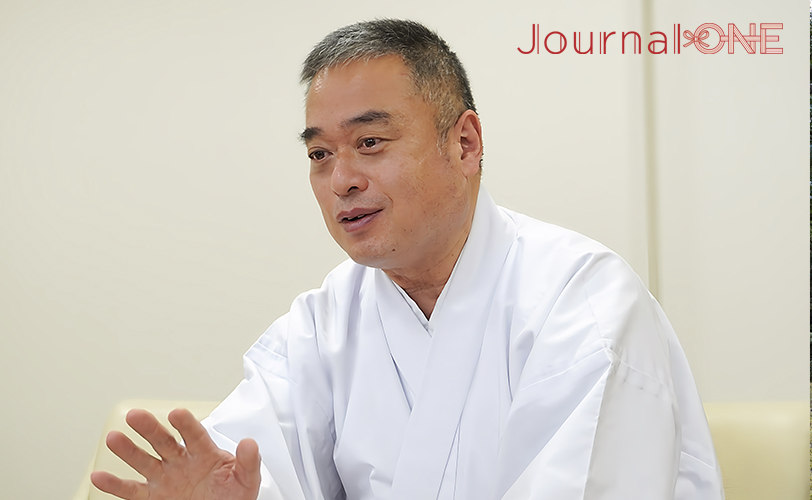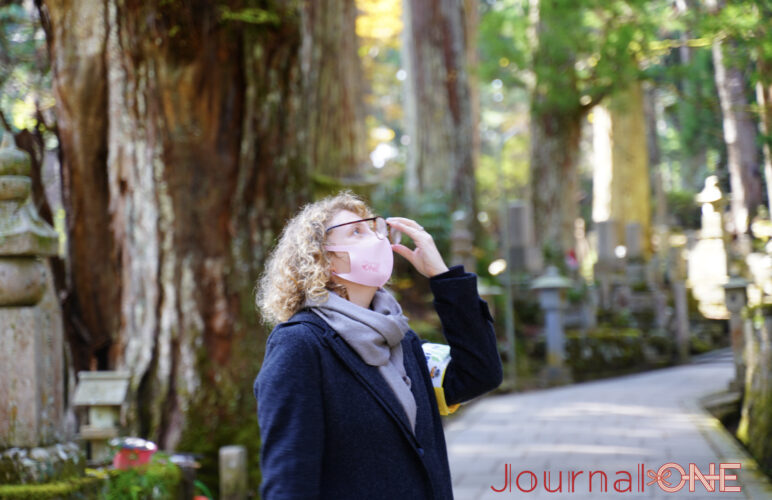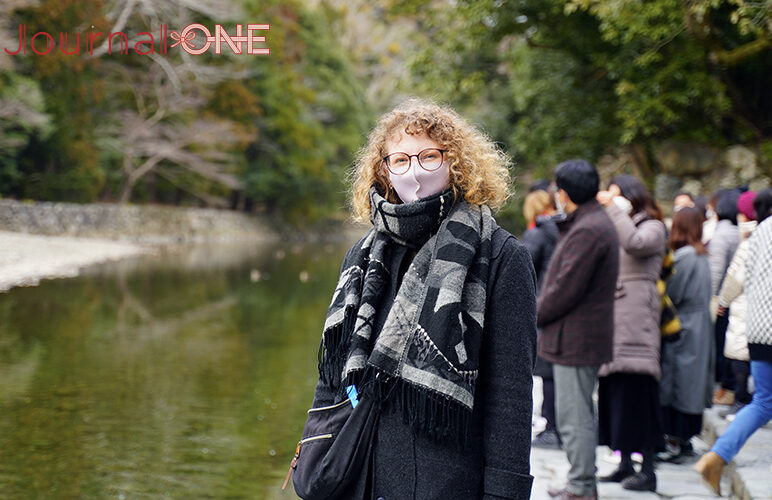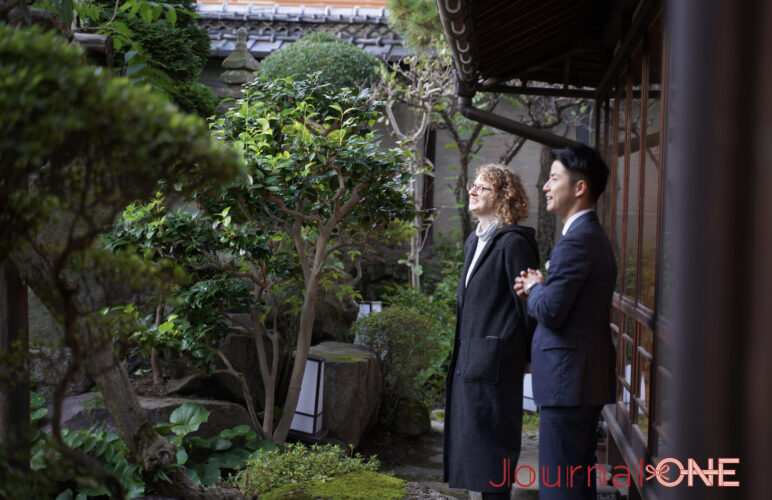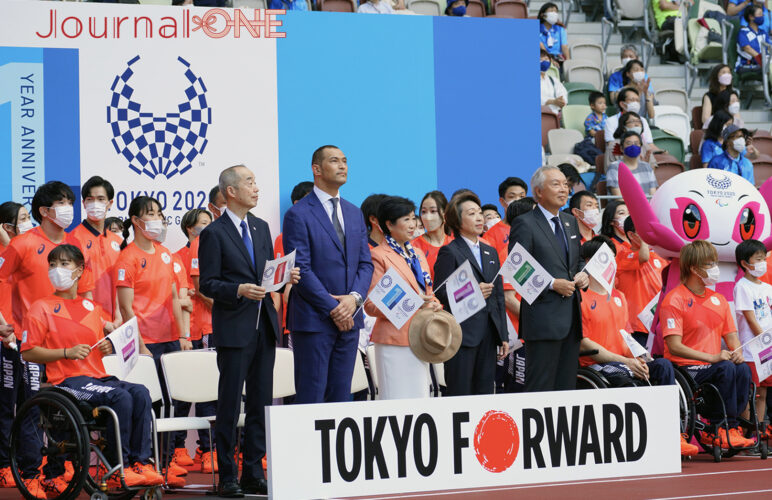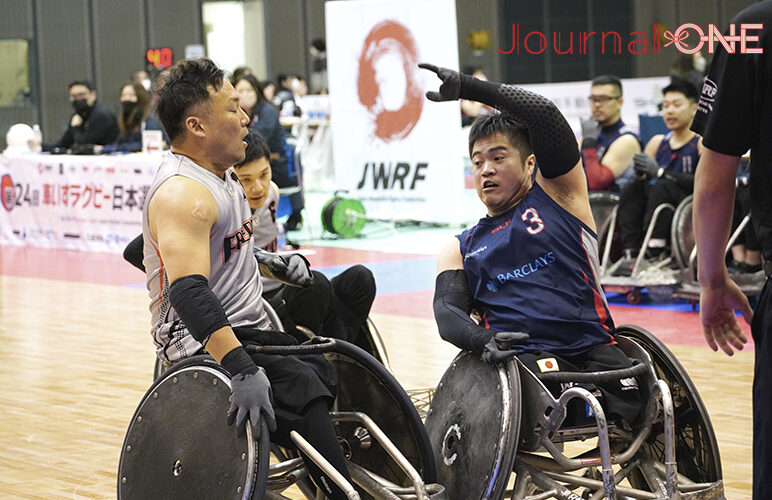How the community feels about the coming 63rd Shikinen Sengu
“We want to tell people the pilgrimage to Ise Jingu follow a worship route reminiscent of the ancient rites,” announces the Ise City Tourism Association, which has taken the lead in a new campaign leading up to the forthcoming 63rd Shrine Shikinen Sengu.
This project emerged out of a passionate desire expressed in the community. A call went out in search of pilgrims from around the country and many applications arrived from area throughout Japan, indicative of the high level of interest in Shikinen Sengu. The draw that Ise Jingu, Japan’s spiritual home, exerts on people is amazing as this project has once again shown.
Journal-ONE was able to secure exclusive interviews with representatives of the Ise Jingu Shrine Administration Office and Futami Okitama Shrine to hear what they have to say about this project, which aims to straightforwardly present to foreign visitors the essence of what worshiping at the shrine is all about. Now that the pandemic has subsided, more and more people are traveling to Japan. One hope of this project is that they will have a wonderful experience at Ise.
Satoru Otowa, Head of the Public Affairs Section in the Jingushicho (Shrine Administration Office) Public Affairs Office
- Please share with us your thoughts about having the Ise Jingu pilgrimage follow a worship route reminiscent of the ancient rites
First, I would like to say how grateful we are that pilgrims flocked here from many different regions. We are truly delighted to see the broad range of ages from people in their 20s all the way to their 60s. I also heard the selection process was quite competitive as the number of applicants was quite high for each person chosen.
Ise Jingu is not just the Naiku Inner Shrine and Geku Outer Shrine. The entire shrine covers a vast tract of forest for tutelary kami (deities). This area comprises approximately one quarter of Ise City. It is important that one actually come here to be able to feel and comprehend how extensive the area is. I think it would be possible for someone to get an actual sense of the size of Ise Jingu by experiencing the ancient tradition of visiting Futami Okitama Shrine for purification and then coming to worship at the Outer Shrine and next the Inner Shrine in this order.

- This time, it was mainly people in Japan who enjoyed this experience.
As the pandemic subsides, the number of travelers to Japan from other countries will likely increase. So, we would certainly like to have many foreign travelers visit Ise Jingu. This time, we had an English journalist and her Japanese counterpart from Journal-ONE participate in the experience. We hope more foreign travelers will be able to enjoy a fascinating visit together with Japanese people in the same way.
We have also been trying to figure out how to best guide foreign visitors so they are able to appreciate the tremendous expanse of this shrine. For example, most foreigners quickly realize how vast this area is if we make a comparison such as saying “the shrine covers an area the size of downtown Paris.” Nevertheless, it has been much harder to explain the essence of Shinto.
- What specifically is difficult about explaining Shinto to non-Japanese?
Well, depending on what region or country the person is from and what religious beliefs they have, it can be difficult to understand the importance of things not visible to the naked eye. What is important in Shinto is divine energy. The sound of clear water flowing in the Isuzu River, the sunshine filtering through the branches, the wafting of large cedar trees as they sway in the breeze, these and other ordinary scenes of natural beauty in which divine energy is present inspire a particular reverence in Japanese people for the invisible world. It is quite often the case that non-Japanese say they aren’t quite able to get a good understanding of this.
With an image, building, painting, or some other visible object, it is easier to feel awe or reverence toward that tangible object. Most foreigners are impressed by Kaguraden Hall and its construction and they show an interest in the decorative wooden logs laid across the ridge of the main sanctuary roof. These are very good things, so when we show people such captivating places, we make sure they don’t miss any photo opportunities. However, as we get close the main sanctuary, we are not able to proceed any further into the inner recesses and people will ask, “We’ve come this far. Why don’t you show us the object of worship inside the shrine?”
I would hope they may come to understand that there is value in something precisely because it cannot be seen.
- So, they must have questions about all the places here and there where photography is not permitted.
The places where photography is not allowed are places where kami dwell. Naturally, impurities have been exorcised to purify such site. The prohibition on photos comes from the idea that spirits will be absorbed into the photograph.
During the late Edo period until the beginning of the Meiji era when Western culture spread quickly in Japan, it was said that a person’s soul would be drawn out of the body if a camera was pointed at them. This kind of thinking may be part of the reason why photos are not permitted.
At any event, we need to figure out ways to have people, who come from different histories, cultures, and religious outlooks around the world, better understand and actually visit and worship at this shrine that is the spiritual home of the Japanese.
- Lastly, what is the one thing that you would like people to know about visiting the shrine?
I would like them to know about the act of purification. At the shrine, water for people to wash their hands is placed at the entrance and both hands must be clean before entering the place where kami reside. Also, around the shrine, a clear stream, such as the Isuzu River for example, flows. It is important to purify both your body and mind by wading or crossing such a clear stream so that you are clean when you pray at the shrine.
In addition, a torii or gate is placed at the entrance to the domain of the kami. I would hope people first bow and then pass through the gate.
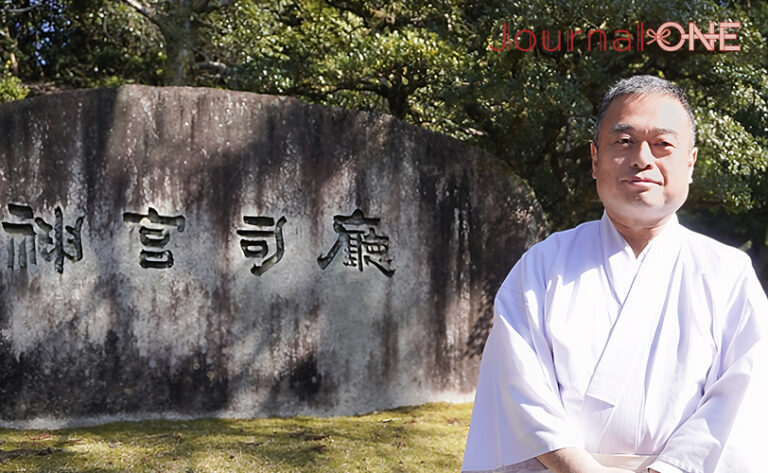
Takayuki Sho, Senior Priest at Futami Okitama Shrine
- Please share with us your thoughts about having the Ise Jingu pilgrimage follow a worship route reminiscent of the ancient rites
In conjunction with this project, we carried out for the first time the ancient practice of Hamasangu. According to this tradition, pilgrims heading to Ise Jingu first purify themselves in the waters of Meoto Iwa (“Wedded Rocks”) before continuing their pilgrimage. As is well known, many important shrine rites are conducted at night. It would be wonderful if visitors could take part in Hamasangu at night. The silence would help them achieve a mental calmness and sense that aspect of service to the kami.
Also, at that time (early February), it was unusually mild and the waves were calm. We were blessed with wonderful weather and also saw the full moon, which was very nice.
In taking part in this project, we also came to realize several things. I hope that all the worshipers who gathered here from regions around Japan were satisfied with the experience, too.
The next events will hopefully be scheduled for a good period sometime between April and December.
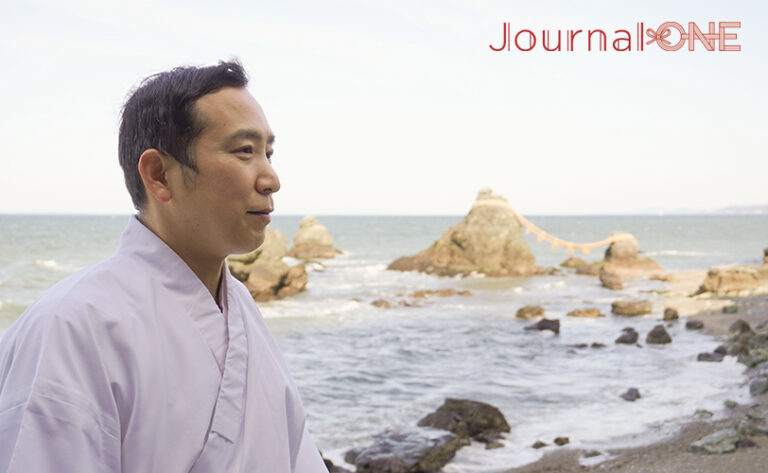
- This time, it was mainly people in Japan who enjoyed this experience.
I don’t know what the situation is over at the Outer Shrine and Inner Shrine, but my impression has been that, here at Futami Okitama Shrine, we have not had many foreign visitors even before the pandemic. In the coming months ahead, the flow of travelers from other countries will gradually return, so I hope we can take advantage of that opportunity to attract more foreigners and encourage them to visit the shrine.
Seeing how fascinated the Journal-ONE British journalist was to take part in the night Hamasangu gave me hope that we might be able to have more people from around the world visit Futami Okitama Shrine if we can better communicate the distinctive appeal of this area.
- Why do you think there have been so few foreign visitors?
As mythology also tells us, the view in Japan is that kami reside in nature. However, that seems to be quite difficult for non-Japanese to imagine.
At Futami Okitama Shrine, the Meoto-iwa function as a sacred torii or gateway to worshipping at Okitama Shinseki (Divine Stone of Okitama). Japanese people are able to look at these rocks and see a husband and wife or a parent and child standing beside each other, but it doesn’t seem to appear that way to people from other countries.
It is important for us to somehow be able to explain in an easy-to-understand way this characteristic, which I touched on earlier, of Japanese people imagining something that is invisible and the idea that deities dwell all around us in nature.
If more attention is focused on not just seeing Japan’s historic sites, but also visiting shrines and their surrounding areas as places for understanding the heart and spirit of the Japanese, then perhaps more foreigners will visit shrines.
- It’s a nice worshipping not just at night, but also early in the morning, isn’t it?
Just as during the night, people are able to go and pray at the shrines in the morning. As they do, they hear the peaceful sound of the waves. Purifying your heart and then going to worship at the Outer and Inner Shrines is a very principled tradition.
On many occasions in the early morning or evening when the air is fresh, you can see Mount Fuji far off in the distance from between the Meoto-iwa rocks. Many people come just to see that view.
In the Futami area, there are also Japanese-style inns and shops that have a distinctive character. It is a good place to take a stroll as it is easy to get around both at night and in the early morning. I hope visitors will come to understand the Japanese outlook on nature here in Ise, the origin of Japan, by participating in a pilgrimage to Ise Jingu, which traverses a worship route reminiscent of the ancient rites.
- Lastly, what is the one thing that you would like people to know about visiting the shrine?
I guess it would be for people to know and understand the importance of purification in order to serve the deity. The mentality of washing your hands and cleansing yourself is a custom that also appears in Japanese mythology.
Futami Okitama Shrine functions as a gateway where you cleanse yourself for shrine worship. It is my hope that visitors will purify themselves before they proceed to the Outer Shrine and then the Inner Shrine while at the same time also enjoying the atmosphere within the shrine grounds as it changes from season to season.
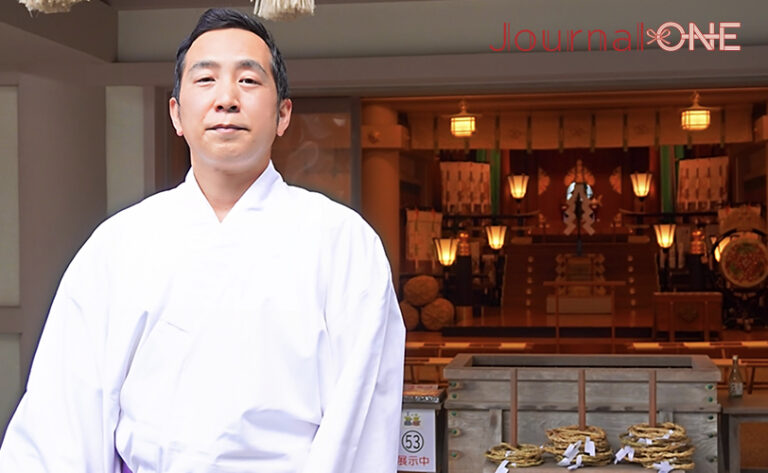
Post-interview thoughts
One impression that foreigners have of Japan when they first arrive here is how clean the cities are. Perhaps, in this custom, we may see how the basic spirit of keeping clean, which underlies the Japanese character, is alive and well.
Satoru Otowa’s explanations were very easy to understand and the time passed quickly as I was fascinated by his pleasant way of talking.
What Takayuki Sho said was also very interesting. He likened all of Ise to a town that welcomes shrine visitors and described how Futami Okitama Shrine, which people visit to first purify themselves, is the gateway to worshipping at Ise Jingu.
This project has been designed to provide a better understanding of the pilgrimage to Ise Jingu along the worship route reminiscent of the ancient rites. It has been realized thanks to the desire of this community and the cooperation of dedicated individuals serving at these shrines. This wonderful initiative provides a new opportunity to visit and worship, and has attracted the attention of many people both inside and outside Japan.

